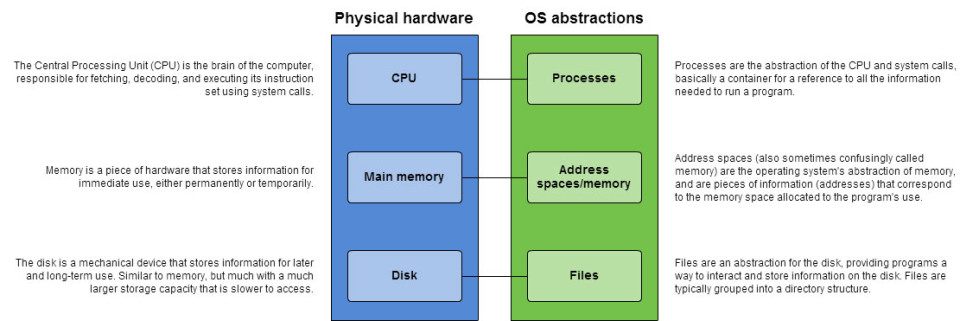So as you may know, I’m working on my Master’s in Information Technology. Basically I’m getting a piece of paper to prove I know how to do what I’ve been doing for a long time. (It’s a competitive industry and you need every advantage you can get, frankly.) After some deliberation, I’ve decided to post about my journey in this educational pursuit; although I won’t be posting every assignment, I’ll be posting the ones I think are useful or interesting or overly visual. I’m sure it will be entertaining, and who knows, maybe even educational. Let’s go!
One of my first assignments in my Operating Systems course was to diagram some of the hardware abstractions present in the most basic operating systems, specifically CPU, memory, and disks.
At first, I was tempted to make a very visual diagram that included little pictographs and bright colors, but then I realized that providing such visual detail to abstractions kind of undermines the point of abstracting the information in the first place. So I opted for a simple block diagram since we’re detailing relationships, and the detailed explanations are written next to the relevant component.

[…] about the evolution of operating systems and diagrammed the relationship between hardware and the operating system abstractions of that hardware. Read more here, although honestly not much more than what I just told you. Don’t click the […]